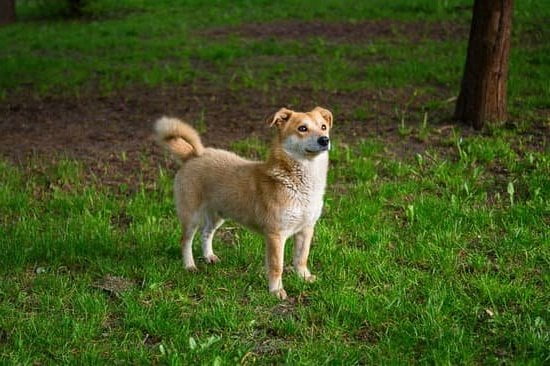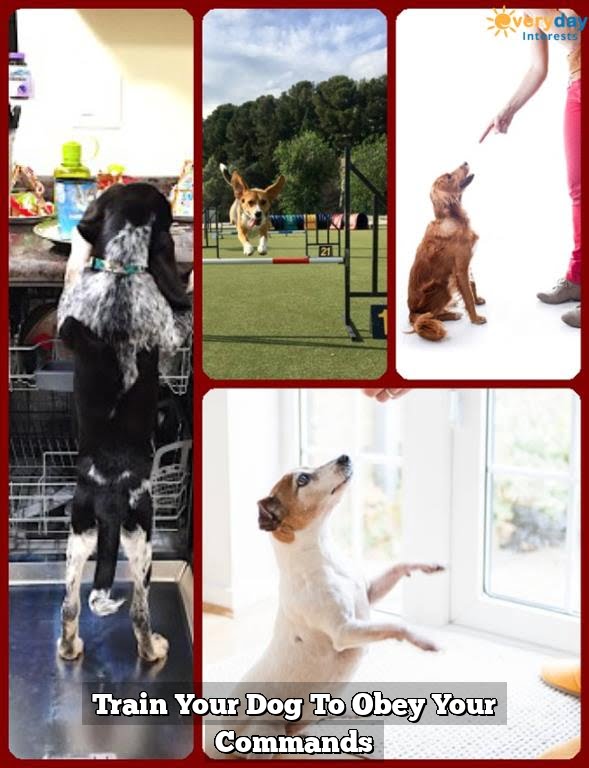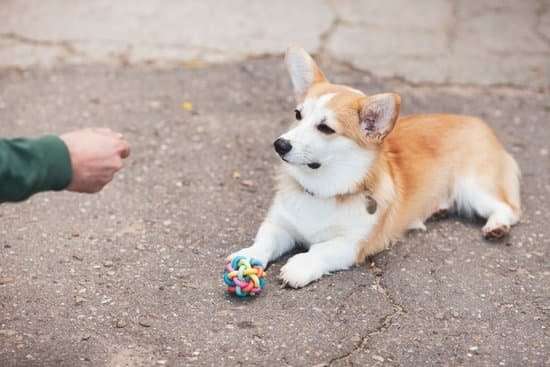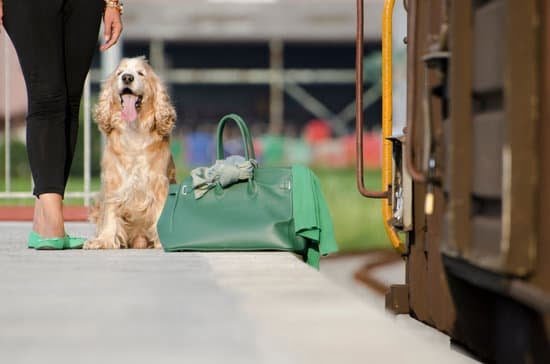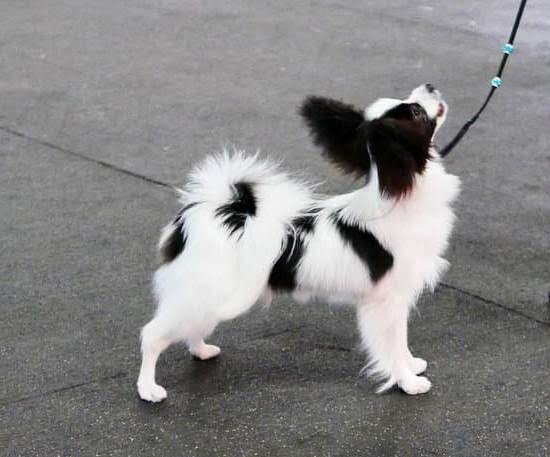Are you wondering how to train your dog with a Kong? Mental stimulation is crucial for a dog’s overall well-being. Dogs, just like humans, need mental exercise to stay happy and healthy. One effective way to provide this stimulation is through the use of interactive toys such as the Kong.
The Kong toy is a versatile and durable interactive toy that can keep your furry friend entertained and engaged. It not only provides mental stimulation but also aids in training your dog. By understanding the importance of mental exercise for dogs, you can enhance their cognitive abilities and prevent behavioral issues that may arise from boredom.
Choosing the right Kong toy for your dog’s breed and size is essential in ensuring that they receive maximum benefits from this training tool. Different Kongs are designed for various levels of chewing strength, so selecting the appropriate one will help make training more effective and enjoyable for both you and your pet. Stay tuned to learn more about how to introduce the Kong toy to your furry companion in our following sections.
What Is a Kong Toy and How Does It Benefit Your Dog’s Training
A Kong toy is a popular chew toy for dogs that can also be used as a tool for training. These toys are made of durable rubber material and come in various sizes and shapes to accommodate different breeds and sizes of dogs. The unique aspect of a Kong toy is its hollow center, which can be filled with treats or food to keep your dog engaged and mentally stimulated.
Benefits of Using a Kong Toy for Training
Using a Kong toy as part of your dog’s training routine offers numerous benefits. First and foremost, it provides mental stimulation for your furry friend, keeping their brain active and engaged. This is especially important for breeds that are known for their high intelligence and need for mental stimulation. By using a Kong toy, you can prevent boredom and destructive behavior in your dog.
Moreover, the act of working to extract the treats or food from the Kong toy helps satisfy your dog’s natural hunting instincts. This engages them in an activity that mimics their wild ancestors’ behavior, leading to a sense of accomplishment and satisfaction.
Additionally, using a Kong toy during training sessions can help build focus and improve your dog’s problem-solving skills. It also encourages positive chewing habits, diverting their attention away from destructive chewing on furniture or other items in the house.
How to Train Your Dog With a Kong Toy
To effectively train your dog with a Kong toy, start by introducing the toy during playtime when they are calm and relaxed. Show them how the toy works by filling it with some treats or food that they enjoy. Encourage them to interact with the Kong by rolling it on the floor or tossing it gently for them to retrieve. As they begin to show interest in the toy, praise and reward them to create positive associations with it.
Gradually incorporate the Kong toy into their training sessions by using it as a reward for completing commands or tasks successfully. This association will reinforce good behavior while keeping your dog motivated during training sessions.
Remember to adjust the difficulty level of filling the Kong as your dog progresses in their training, gradually making it more challenging by freezing fillings or adding layers for them to work through. By consistently using the Kong toy in training, you can establish a fun and rewarding way to engage with your dog while improving their skills and overall well-being.
Choosing the Right Kong Toy for Your Dog’s Breed and Size
Understanding Your Dog’s Breed
Some breeds are known for their strong jaws and high energy levels, while others may be more gentle chewers. For example, a large breed like a German Shepherd may require a more durable Kong that can withstand powerful chewing, whereas a smaller breed like a Chihuahua may prefer a softer or smaller Kong toy.
Selecting the Right Size
It’s important to choose the correct size of Kong toy for your dog to ensure their safety and enjoyment. A Kong that is too small may pose a choking hazard, while one that is too large may not provide enough stimulation. Make sure to consider your dog’s weight, age, and chewing habits when selecting the appropriate size of Kong toy.
Specialized Kongs
In addition to traditional Kongs, there are also specialized options available for different purposes. For example, there are Kongs designed specifically for puppies with softer rubber for teething, as well as senior dogs with sensitive teeth or gums.
There are also Kongs that can be frozen for added cooling relief on hot days or during teething stages. By understanding your dog’s breed and size requirements, you can choose the perfect Kong toy that will keep them engaged and entertained during training sessions.
Preparing the Kong Toy for Training
When it comes to training your dog with a Kong toy, the filling you choose plays a crucial role in keeping your furry friend engaged and motivated. By selecting the right ingredients and techniques, you can create a rewarding experience that not only entertains your dog but also provides mental stimulation.
One popular way is to use your dog’s regular kibble mixed with some treats to entice them to interact with the toy. You can also add some wet food, peanut butter, or yogurt for added flavor and texture.
Another great option for filling your Kong toy is by freezing it after filling it up. Freezing the contents will make the treat last longer as your dog works to get every last bit out of the toy.
This is especially useful if you want to keep your dog occupied for an extended period or if you need to leave them alone for a while. Additionally, freezing can be beneficial during hot weather as it provides a refreshing and entertaining activity for your pet.
It’s essential to consider your dog’s dietary restrictions and preferences when choosing what to fill their Kong toy with. Some dogs may have allergies or sensitivities to certain ingredients, so always check with your veterinarian if you’re unsure about what is safe for your furry companion. Experimenting with different fillings and combinations will help you figure out what works best to keep your dog engaged and excited about using their Kong toy during training sessions.
| Benefit | Technique |
|---|---|
| Long-lasting entertainment | Freezing filled Kong |
| Dietary considerationCheck with veterinarian for safe options |
Step-by-Step Guide to Introducing the Kong Toy to Your Dog
Dogs are highly intelligent creatures that require mental stimulation to stay happy and healthy. One effective way to provide this mental exercise is by using a Kong toy. These toys are versatile and can be filled with treats or food to keep your dog engaged for hours. If you’re wondering how to train your dog with a Kong, the first step is to introduce the toy properly.
To begin training your dog with a Kong, start by selecting an appropriate size and strength level for your dog’s breed. Once you have the right Kong toy, introduce it to your dog when they are calm and relaxed. Show them the toy and allow them to sniff it to pique their curiosity.
Next, entice your dog by filling the Kong with high-value treats or food. You can use peanut butter, kibble, or other tasty options that your dog loves. The goal is to make the toy irresistible and create positive associations with it. Encourage your furry friend to interact with the Kong by rolling it on the floor or gently tossing it for them to retrieve.
Incorporating short Kong sessions into your dog’s daily routine can help strengthen the bond between you and your pet while providing valuable mental stimulation. Remember to supervise your dog during playtime with the Kong and adjust the difficulty level as needed based on their progress. With patience and consistency, you’ll soon see how this simple toy can be a powerful tool in training and entertaining your beloved canine companion.
| Aspect | Recommendation |
|---|---|
| Kong Toy Size | Choose an appropriate size for your dog’s breed |
| Filling Options | Use high-value treats like peanut butter or kibble |
| Supervision | Always supervise playtime with the Kong |
Building Positive Associations
Training your dog with a Kong toy is an excellent way to provide mental stimulation, prevent boredom, and reinforce positive behavior. Building positive associations with the Kong toy will not only make training fun for your furry friend but also strengthen your bond. Rewarding your dog for interacting with the Kong toy is a crucial step in the training process.
To start building positive associations, it’s essential to use high-value treats that your dog loves. Whether it’s small pieces of their favorite treats, peanut butter, or even some wet food, make sure the reward is enticing enough to keep them engaged with the Kong toy. By associating the toy with delicious rewards, your dog will be motivated to interact with it more often.
During training sessions with the Kong toy, be generous with praise and treats when your dog shows interest or successfully retrieves treats from inside the toy. Positive reinforcement will help your dog understand that playing with the Kong brings rewards and approval from you.
This will not only encourage them to continue engaging with the toy but also boost their confidence and eagerness to learn new tricks. Incorporating rewards into your training sessions will make learning how to train your dog with a Kong a rewarding experience for both you and your canine companion.
Advanced Kong Training Techniques
Once your dog has mastered the basics of interacting with a Kong toy, you can start to increase the difficulty level to provide more mental stimulation. Here are some advanced techniques to challenge your pup and keep them engaged:
1. Frozen Kongs: Fill the Kong toy with wet dog food, yogurt, or peanut butter, then freeze it overnight. The frozen treat will last longer and provide a cooling sensation for your dog to enjoy. This is particularly beneficial during hot summer months or for teething puppies.
2. Puzzle Kongs: Use treats that are slightly larger than usual and stuff them into the Kong toy along with some kibble. Your dog will need to work harder to push the treats out of the toy, providing both mental and physical exercise.
3. Layered Kongs: Create layers of different textures and flavors within the Kong toy to make it more challenging for your dog. Start with a base of kibble, then add a layer of wet food or mashed bananas, followed by another layer of kibble. This variety will keep your dog interested and engaged as they work through the layers.
Remember, as you increase the difficulty level of Kong training for your dog, always monitor their progress and adjust accordingly. It’s essential to find the right balance between challenge and success to keep your furry friend motivated and mentally stimulated. With patience and consistency, you can continue to strengthen the bond with your pet while providing them with valuable mental enrichment through interactive play with a Kong toy.
Troubleshooting Common Issues
When using a Kong toy for training your dog, you may encounter some common issues that can hamper the progress of your training sessions. These issues can include overexcitement, disinterest, or even frustration on the part of your furry friend. Understanding how to address these problems effectively will help ensure successful training outcomes.
To tackle overexcitement during Kong toy training, it is important to start by ensuring that your dog is in a calm state before introducing the toy. You can engage in some calming activities such as a short walk or basic obedience training before presenting the Kong. Additionally, you can use treats or praise to reward calm behavior and reinforce the idea that excitement does not lead to immediate access to the toy.
If your dog shows disinterest in the Kong toy during training sessions, it may be helpful to reassess the filling options you are using. Experiment with different combinations of treats, kibble, and peanut butter to find what captures your dog’s interest.
Some dogs may prefer certain textures or flavors over others, so it may take some trial and error to find the perfect filling for your pup. Remember that patience and persistence are key when trying to engage a disinterested pooch in Kong training.
Lastly, if your dog displays signs of frustration while interacting with the Kong toy, it is crucial to take a step back and evaluate the situation. Frustration can often stem from difficulty in accessing treats or getting stuck with a challenging filling inside the toy.
In such cases, consider starting with easier filling options and gradually increasing the level of difficulty as your dog becomes more comfortable with using the Kong. By addressing these common issues proactively, you can set your canine companion up for success in their training journey on how to train your dog with a kong.
- Start by ensuring that your dog is calm before introducing the Kong toy
- Experiment with different filling options to keep your dog interested
- Address signs of frustration by adjusting the difficulty level gradually
Incorporating Kong Training Into Your Dog’s Daily Routine for Long-Term Success
As we have discussed throughout this guide, using a Kong toy can be an incredibly effective tool in training your dog and providing them with mental stimulation. By incorporating Kong training into your dog’s daily routine, you can not only strengthen the bond you share with your furry companion but also continue to challenge their cognitive abilities and keep them entertained.
Consistency is key when it comes to successfully integrating Kong training into your dog’s daily schedule. Make sure to set aside dedicated time each day for your pup to engage with their Kong toy. Whether it’s during meal times, before leaving for work or after a walk, find a routine that works best for both you and your dog. This regularity will not only reinforce good behavior but also provide structure and stability in their everyday life.
Remember, the key to long-term success lies in gradually increasing the difficulty of the Kong training exercises as your dog becomes more proficient. Experiment with different filling options, freezing techniques, and interactive challenges to keep things interesting.
By continually challenging your dog in a positive and rewarding environment, you can ensure that they remain mentally stimulated and engaged for years to come. So start implementing these techniques on how to train your dog with a kong into their daily routine today and watch as their behavior improves and their happiness grows.
Frequently Asked Questions
Can I Give My Dog a Kong Everyday?
It is generally safe to give your dog a Kong every day, as long as it is done in moderation. Using a Kong as a regular part of your dog’s routine can provide mental stimulation and help with dental health.
Why Can’t My Dog Figure Out a Kong?
Some dogs may struggle to figure out a Kong toy due to their individual preferences and experiences. It could be helpful to demonstrate how to use the Kong or introduce treats gradually to build interest and engagement.
Can I Leave My Dog Alone With a Kong?
Leaving your dog alone with a Kong can be a good way to keep them entertained and mentally stimulated while you are away. However, it is important to monitor your dog initially to ensure they are using the toy safely and not swallowing any pieces.

Welcome to the blog! I am a professional dog trainer and have been working with dogs for many years. In this blog, I will be discussing various topics related to dog training, including tips, tricks, and advice. I hope you find this information helpful and informative. Thanks for reading!

